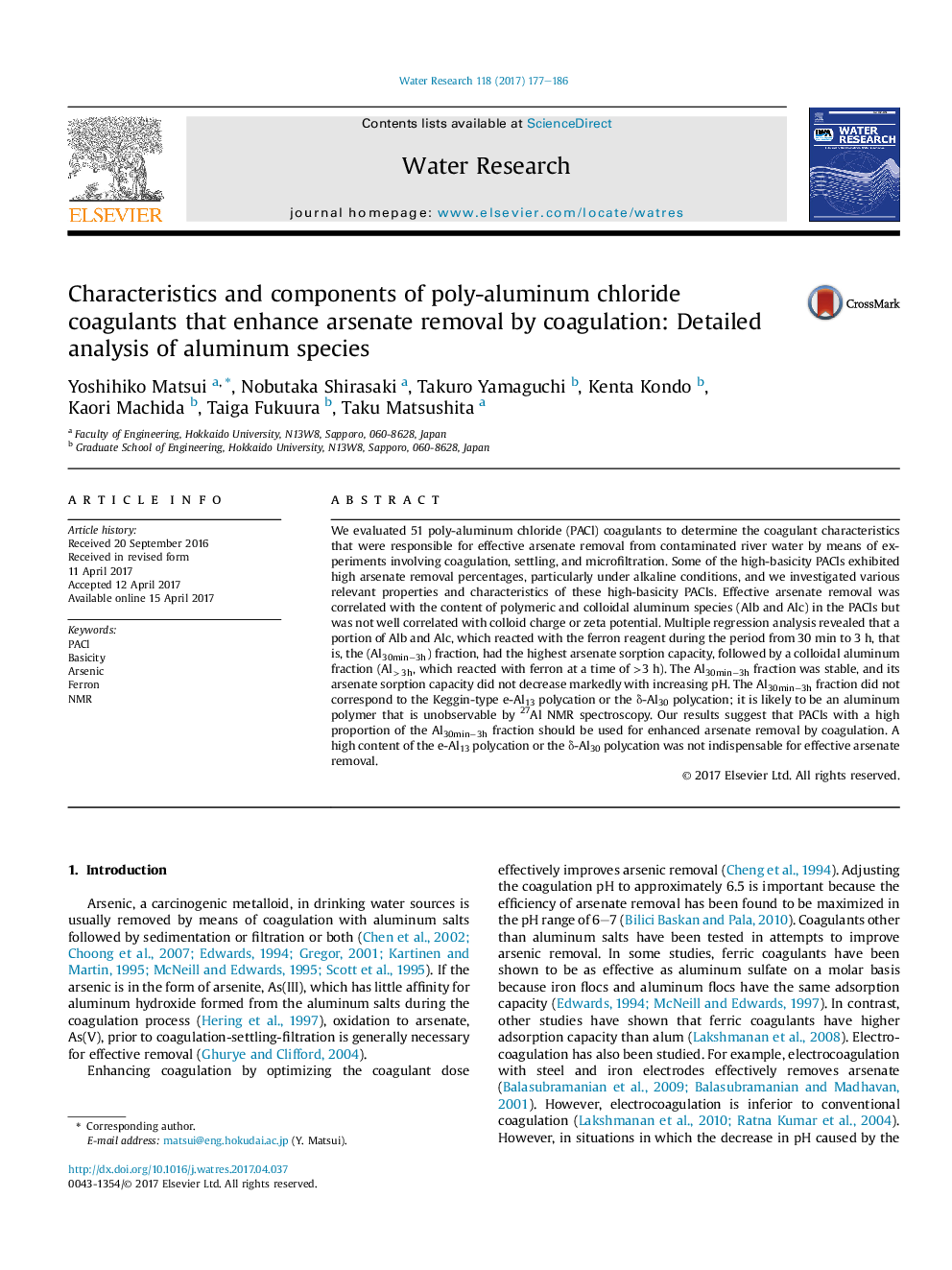| Article ID | Journal | Published Year | Pages | File Type |
|---|---|---|---|---|
| 5758931 | Water Research | 2017 | 10 Pages |
Abstract
We evaluated 51 poly-aluminum chloride (PACl) coagulants to determine the coagulant characteristics that were responsible for effective arsenate removal from contaminated river water by means of experiments involving coagulation, settling, and microfiltration. Some of the high-basicity PACls exhibited high arsenate removal percentages, particularly under alkaline conditions, and we investigated various relevant properties and characteristics of these high-basicity PACls. Effective arsenate removal was correlated with the content of polymeric and colloidal aluminum species (Alb and Alc) in the PACls but was not well correlated with colloid charge or zeta potential. Multiple regression analysis revealed that a portion of Alb and Alc, which reacted with the ferron reagent during the period from 30 min to 3 h, that is, the (Al30minâ3h) fraction, had the highest arsenate sorption capacity, followed by a colloidal aluminum fraction (Al>3h, which reacted with ferron at a time of >3 h). The Al30minâ3h fraction was stable, and its arsenate sorption capacity did not decrease markedly with increasing pH. The Al30minâ3h fraction did not correspond to the Keggin-type e-Al13 polycation or the δ-Al30 polycation; it is likely to be an aluminum polymer that is unobservable by 27Al NMR spectroscopy. Our results suggest that PACls with a high proportion of the Al30minâ3h fraction should be used for enhanced arsenate removal by coagulation. A high content of the e-Al13 polycation or the δ-Al30 polycation was not indispensable for effective arsenate removal.
Related Topics
Physical Sciences and Engineering
Earth and Planetary Sciences
Earth-Surface Processes
Authors
Yoshihiko Matsui, Nobutaka Shirasaki, Takuro Yamaguchi, Kenta Kondo, Kaori Machida, Taiga Fukuura, Taku Matsushita,
